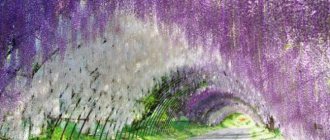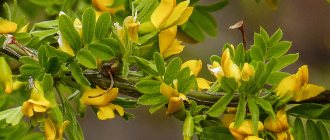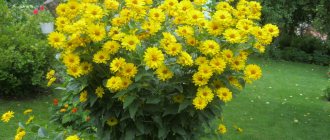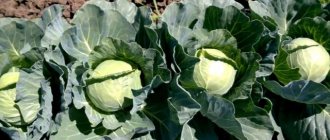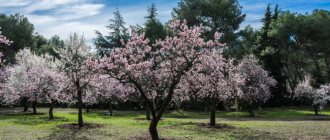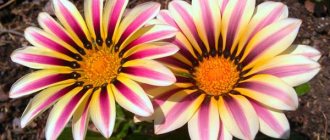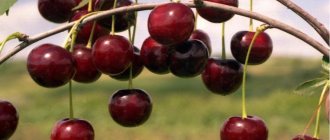Kniphofia is a plant native to the African continent. Every housewife who wants to add something new to her garden design should familiarize herself with the information on how Kniphofia reproduces, feeds and overwinters - planting and care in open ground depends on the climate of the region, the chemical composition of the soil, and lighting.
In the description you can find a second name for the decorative crop - kniphophia or tritoma, but they belong to the same species. At the moment, about 75 varieties are known, each of which is more or less adapted to growing in the middle zone. The main enemy of perennials is low temperatures in winter. The advantage is that it blooms from early summer to late autumn, with different varieties opening their inflorescences at different times, creating a vivid impression of the flowerbed.
Description of the plant
The long, narrow leaves of kniphofia reach a length of about 90 cm. They are often used by designers to decorate bouquets of other types of plants. The inflorescence is 10–25 cm, depending on the variety, in shape and resembles a lupine green manure plant. Low dwarf species with a height of up to 50 cm are suitable for garden flower beds. To fence an area, you can plant varieties with a height of about 3 m.
The main interest for gardeners is the flower: kniphofia looks like elongated torches, consisting of several small inflorescences. Colors vary - red, yellow, orange. There are also varieties with two shades.
General description with photo
Initially, the Kniphofia genus was assigned to the Liliaceae family, however, after a refined systematization, it was assigned to the Xantorreidae family. It is an evergreen decoratively flowering perennial with a dense basal rosette formed by dense narrow arrow-shaped leaves. In mid-summer, a tall bare peduncle shoots out from the center of this rosette, at the top of which a plume-shaped or racemose dense inflorescence of the original type is formed.
The flowering itself is interesting and unusual. The buds that look like small bells in different varieties can begin to bloom both from the bottom of the inflorescence up and from the top down. As they open, they can change their color several times in the palette characteristic of this species. For example, from red to orange, then to bright yellow and finally becoming light lemon. Moreover, as flowering progresses, this metamorphosis in individual specimens can occur several times.
The plant can also be found under other names: tritoma, kniphophia or notosceptrum.
Some types of kniphofia can grow on the highest mountain peaks - up to 4 km above sea level!
Types and varieties
Many species trace their existence back to the very first Kniphofia berry introduced into Russia. The color is red, the leaves are narrow, gray-green, and the inflorescences appear in July. Many hybrid varieties have been created on its basis. All of them are tall – up to 1.5 m:
- 'Doctor Kerr' is a yellow variety. The hybrid blooms for about 2 months in a row.
- "Orange Beauty" - orange inflorescence.
- "Fire Flame" is red in color, but the length of the peduncle is about 25 cm.
Knifofia "Orange Beauty"
Kniphofia “Doctor Kerr”
These species take root better in the southern regions, where the duration of the cold season is shorter. But even in this case, you cannot leave the plant outside in winter - Kniphofia berry has a shallow root system, so it quickly freezes.
Kniphofia "Flamenco" is also a hybrid berry variety. The color is bright red, but it grows to a height of about 1 meter.
Knifofia "Flamenco"
Kniphofia hybrid includes several types:
- popsicle – yellow-red inflorescences;
- surprise - two-color copy;
- alcazar orange;
- African guest - pink, dark burgundy inflorescences;
- Fleming Torch is a low-growing plant;
- Tukka is the most adapted species for cultivation in central Russia.
The largest type of kniphofia, the planting of which is recommended for fencing areas, is Thomson's knikhofia, about 3 meters high. In order for the plant to show all its declared characteristics, it is necessary to choose the right planting site and follow the feeding regimen, especially before flowering, when the tissues accumulate nutrients.
Autumn care and wintering
The African species tolerates the cold period well if the plant is properly prepared:
- leaves from the root rosette are carefully tied to block the access of moisture to the central rosette;
- you can insulate the bush with film, after making holes for ventilation;
- Be sure to sprinkle the bush with fallen leaves or cover it with spruce branches;
- with a sufficient thickness of the protective layer and proper shelter, the African plant can withstand cold temperatures down to -10°C, which is rare in the southern regions.
In middle and northern latitudes, you should not leave the bush in the ground: the plant freezes. Kniphofia is carefully dug up and planted in a flowerpot with a drainage layer, high-quality soil, and good soil aeration. For wintering, a period of rest is organized. The bush is located in a cool room, where there is no bright lighting and high temperature: +8..+10 degrees is enough, no more.
Growing conditions
It is more difficult for African species to take root in our conditions, so we need to make them as comfortable as possible. The soil and choice of location are important. Kniphofia is a heat-loving plant and is not afraid of sunlight. If the conditions are not appropriate, the crop may begin to get sick due to decreased immunity.
Selecting a location
Half-flooded lowlands are especially dangerous for kniphofia. In this case, the horse system does not receive oxygen and rots. Open areas and hills are a good place to grow. In spring, they warm up faster and stimulate root growth. Rooted plants do not need shelter from sunlight, but it is better to shade young seedlings until they get stronger, so many housewives transplant the bushes to a new location after the first year.
The soil
Kniphofia requires well-drained soil mixed with sand. It is important that constant humidity is maintained. If the roots dry out, the supply of nutrients dissolved in water stops and the tissues lose turgor - intercellular pressure.
Loamy soils are suitable, but additional fertilization and watering will be required to dissolve the granules. Clay is not the best solution for growing kniphofia, since the substance does not allow moisture to pass through well. Areas of clay soil must be dug up and mixed with turf soil, sand or peat, and humus must be added to improve nutritional characteristics.
Interesting! In regions with cool climates, it is recommended to place dark stones in the flower bed at night. During the day they accumulate heat, and at night they release it to the roots.
Knifofia in landscape design
"African Beauty" successfully plays the role of the first violin on the lawn, sunny area or in the garden. Single plantings look impressive against the backdrop of evenly trimmed green grass, in the center of a small lawn, or as a splash of color in a fairly modest-sized plot.
A plant from hot countries goes well with many garden flowers. Suitable companions:
- Dahlias,
- Salvia,
- Sage,
- Lupine is perennial,
- Rhipsalis,
- Barley is maned.
When decorating a garden, summer cottage, or other places, you need to know what height the selected Knifofia variety has, so that there are optimal proportions between the African species and other flowers. The flower stalks of some varieties grow 1.5 m or more, and low-growing garden plants do not look very impressive or are completely hidden behind the lush foliage of an exotic bush.
When growing an African plant, it is useful to adhere to the rules specified in the article. Violation of recommendations reduces decorativeness and negatively affects vegetation and flowering.
Do you want to know more useful information about the nuances of growing Kniphofia? Watch the following video:
Growing kniphofia from seeds
As a method of propagation, seeds are used in the southern regions, since in the northern regions the boxes do not have time to ripen and the material is not suitable for sowing. It is not advisable to propagate hybrids by seeds - in this case, the decorative qualities of the plants are lost.
Sowing
The sowing procedure begins around the end of March. They do this at home using shallow containers. Scatter the seeds over the surface of the soil and cover a little with soil. It is advisable to cover the top with film to prevent evaporation and drying of the material. Place the container in a warm place, perhaps on a sunny windowsill.
After 2–3 weeks, the first shoots appear. At this time, they begin to open the film a little so that the plant gets used to room conditions. When the third leaf appears, the seedlings are transplanted into small pots with a nutrient mixture.
Seedling care
What measures does Kniphofia need: growing from seeds should be accompanied by regular spraying from a spray bottle, loosening the soil in the area of the roots to allow air access. Fertilizing at this stage is not so important, because the soil is usually purchased, saturated with nutrients.
Culture propagation
How to divide a kniphofia bush photo
After wintering, adult bushes can be divided.
- Dig up a kniphofia bush in April-early May, divide it into several parts (rhizome with growing points and a bunch of leaves), sprinkle the cut areas with charcoal or powdered crushed charcoal tablets and plant them at a distance of 30-40 cm.
- To make seedlings grow faster, cut off the rosette of leaves, leaving 15-20 cm from the root. This will reduce moisture evaporation, and the plant will expend less energy, directing it to the growth of new roots.
This crop can be propagated by seeds or vegetatively. Most often, in the middle zone, the duration of summer is not enough for the seeds to fully ripen, so the plant is mainly propagated by dividing the bush.
Each adult kniphofia bush over three years old periodically forms stolons, used as planting material for propagation. The separation of daughter rosettes is carried out in early May.
In this case, planting is done in pre-prepared holes, which are filled with nutrient soil. At first, the divisions require abundant watering, which is reduced as the plant matures. Also, immediately after planting, it is necessary to artificially shade the seedling. The first flowering with this method of propagation occurs a year after the division of the plant.
Kniphofia "Poco Yellow"
Kniphofia "Poco Orange"
Seeds
When growing kniphofia yourself, use only purchased seeds. In the second half of March, they are sown in a soil mixture (any soil mixture, just enough that it allows moisture to pass through well, is loose and nutritious). To increase the germination of seeds, the container with the crops is covered with film and left in this position for 2-3 weeks. From time to time, the improvised greenhouse must be ventilated and the soil in it must be moistened.
The emerging shoots are gradually hardened at room temperature, and when two leaves form, the plants are planted in separate containers. In July, the perennial is planted in its designated place. A flower grown in this way blooms in the third year.
Dividing the bush
An easier way to propagate this crop. An adult bush at the age of three years forms daughter rosettes, which are used for propagation. At the beginning of May, the daughter rosettes are separated from the main bush with a sharp knife. The cut is dried and sprinkled with charcoal. After a few hours, the rosettes are planted in previously prepared holes filled with nutritious soil mixture.
Reproduction by dividing the bush is the most suitable for the central part of the Russian Federation. While the seeds are not relevant, a divided specimen will even delight you with the splendor of flowering next year.
There are two methods of propagating kniphofia.
Dividing the bush
When dividing a bush, in early May, the parent seedling is dug up, from which the daughter rosettes are separated. The separated parts of the plant are dried and planted in the ground.
Seeds
Most gardeners propagate bushes using seeds. To do this, ripe seeds are collected from the bush in early autumn. Then they are stored until spring and planted for seedling germination.
The flower can be propagated both vegetatively and using seeds. In the middle zone, the seeds do not ripen, so the crop is most often propagated vegetatively
Typically, dividing the bush is used, for which in late April - early May the bushes are dug up and the daughter rosettes that form in the axils of the lower leaves are carefully separated.
When growing kniphofia from seeds, purchased planting material is used. Seeds are sown in March-April and covered with film for better germination. After 20 days, shoots appear, after which the film is removed, gradually accustoming the seedlings to room conditions. They dive when there are three true leaves and are planted in a permanent place in July. Young plants bloom in 2-3 years.
Planting in open ground
Kniphofia is planted in the garden with the onset of warm weather. There should be at least 40 cm between the bushes. After planting in open ground, it is necessary to monitor the humidity and prevent the soil from drying out for a long time. Seed specimens will begin to bloom in a year with proper care.
Deadlines
In each region, stable warm days occur at different times. Adult plants tolerate temperatures above 0 degrees well, but it is advisable to plant young seedlings in open ground when the temperature is above 8 degrees, preferably 10 - 12.
Landing rules
Before planting, prepare the area:
- dig up;
- bring in sand;
- level with a rake.
Next, take the seedlings out of the pot along with the soil and place them in the holes, covering them with soil. The rosette should be on the surface of the soil.
Wintering
The wintering process of kniphofia completely depends on the latitude at which it was planted. In the southern part of Russia, the flower can be safely left in open ground, although it will still need to be covered. If the plant is grown in regions where the temperature in winter drops below minus 15 degrees, then you will additionally have to sprinkle the bushes with spruce branches or leaves, and also insulate the structure with a film with ventilation holes.
In northern latitudes, where frosts are more severe, it is useless to leave the plant in open ground for the winter - it simply will not survive them. Therefore, for successful wintering, you will need to remove the flower from the soil, place it in a container with nutritious soil and drainage, and then put it in a room where the temperature does not reach 8 degrees Celsius.
Reproduction by dividing the bush, transplantation
To preserve its decorative qualities, kniphofia is often propagated by dividing the bush. This happens in the following order:
- At the beginning of May, adult bushes are dug up, in which daughter shoots have appeared in the axils.
- Separate them using a sharp knife.
- Planted in the ground.
Small shoots need frequent but light watering. Events are held in the morning before sunrise or in the evening, when the rays do not burn the leaves as much.
It is recommended to dig up the plants and divide the rhizomes every 5 years. This procedure is very painful for kniphofia - care after it should be more thorough.
Kniphofia: combination with other plants
When composing a composition for mixed planting of kniphofia with other plants, you should take into account the flowering time, as well as the requirements for care and watering, so that the plants are comfortable.
Kniphofia in a flowerbed
In landscape design, kniphofia is often combined with other perennials:
- sage;
- bearded iris;
- gypsophila;
- decorative cereals;
- Eremurus;
- lupine;
- dahlias.
Kniphofia care
Care activities include:
- watering;
- mulching to prevent excessive drying of the top layer of soil;
- removal of weeds that claim nutrients;
- trimming dry inflorescences;
- feeding;
- removing dry leaves.
In the fall, after the plant has completely finished flowering, it is transferred to a room where the temperature fluctuates around 10 degrees. This could be a basement or a warm barn.
Watering
Watering can be done at the root or by spraying. You can’t do this during the day in the heat - you can cause the leaves to burn, and the crop will lose its decorative qualities.
Water the plants every 3-4 days in the summer. In winter, when stored in the basement, Kniphofia is watered once a month, maintaining low soil moisture.
Feeding
At the beginning of the growing season, plants need nitrogen substances. To do this, you can use complex mixtures, for example, azophoska, nitroammophoska, or one-component mixtures - urea, saltpeter, superphosphate - double or regular. It is impossible to abuse nitrogen for a long time, otherwise the green mass will develop, and flowering will be late or not at all. Closer to the beginning of flowering, the turn of potassium fertilizing approaches. It is potassium that maintains the decorative properties of plants - the splendor of the inflorescence, the brightness of the color, the ability to remain in the vase for a long time after cutting.
Phosphorus is an element that is necessary throughout the entire growing season, so it is added to flower beds in the fall or before planting in the spring. You can use phosphate rock, a long-term fertilizer that is applied to the soil once every 3 to 4 years.
Humus is suitable from organic matter - fresh manure is dangerous, as it emits methane, which burns the roots. You can infuse wood ash or mix the soil with homemade compost.
Trimming
Pruning of yellowed leaves is carried out in the spring, when the film is removed. If the plant overwintered in the basement, such a procedure is rarely needed.
After flowering ends, the flower stalks are removed at the root so that they do not take nutrients from the plant.
Kniphofia: varieties and varieties
Some species of this African plant, as well as hybrids of perennial kniphofia, are distributed throughout the globe as ornamental garden plants.
Types of kniphophia are divided into groups:
Berry. This is the tallest group. Some popular varieties:
- Dr. Kerr Lemony;
- OrangeBeauty Orange;
- Makowana.
Kniphofia berry
Tukka. This is the most sustainable species for our climate.
Kniphofia tukka
Hybrid. Hybrid varieties are mostly bred on the basis of Kniphofia berry. The most popular varieties:
- Cobra;
- Cardinal;
- Rocket;
- Atlanta.
Kniphofia hybrid
Attention! Existing names of the plant: kniphofia, kniphophia, tritoma, notosceptrum.
Diseases and pests
Plants get sick most often due to a lack of nutrition in the soil or inappropriate growing conditions. Kniphofia is especially prone to diseases, since it is not an original inhabitant of the middle zone.
Due to saturation with moisture, various rots appear. Such plants must be immediately removed and burned to prevent the fungus from spreading throughout the entire flowerbed. In the initial stages, fungicides are used, but this does not always help. The plant is dug up, the roots are cleaned from damaged areas and transplanted to a more favorable place.
Among the insects that damage the above-ground parts of Kniphofia are aphids, whitefly butterflies, and thrips. To destroy pests, the entire flowerbed is sprayed with insecticides, repeating treatments after 5, then after 10 days.
Growing
This crop can be propagated by seed, first growing seedlings. In the first half of spring, the seeds are placed in prepared soil.
For this purpose, boxes filled with soil mixture for flowers, which have been previously disinfected, are suitable. Before the first shoots appear, the boxes are covered with oilcloth or glass and placed on the windowsill.
You can transfer them to the greenhouse.
The soil with seeds needs to be moistened and ventilated; after twenty days you can see the first shoots.
Now the seedlings can be accustomed to room temperature, for which the polyethylene (glass) is removed for a while, increasing the duration every day. As soon as the first leaves form on the first shoots, they can be transplanted into separate pots.
In another article we described the cyclamen flower.
It is worth paying special attention to the fact that the plant behaves negatively at low temperatures and in damp weather conditions. That is why planting on a garden plot is carried out in mid-summer, when the temperature and humidity become constant.
Recommendations for planting:
- Choose a site for planting this crop that is not shaded; the plant needs enough light.
- The southern part of the yard is suitable, and preferably on a hill.
- The soil needs to have good ventilation and good moisture absorption, but so that there is no stagnation of water.
- Sandy soil is considered most suitable; it must be loosened and fertilized before placing the seedling.
- For planting, holes are dug at a distance of about forty centimeters from each other, and its depth should be no less than the root system of the seedlings, which are transplanted into a moistened hole with a lump of earth.
- After this, the seedling is dug in and the soil is compacted around it, and then watered.
Kniphofia can be cultivated quite easily.
After planting, it will begin to bloom only next year, taking into account that the root is well absorbed. And for this, good care of the plant is necessary: timely watering, mandatory loosening of the soil after moistening, as well as getting rid of weeds.
Description of the genus Kniphofia
All varieties of Kniphofia are perennial and deciduous. Some representatives are evergreen. The height of the flower depends on the variety. Most of them grow 0.5-1 meters long, but there are stunted specimens. The leaves of the crop are collected in a basal bunch, from which a peduncle grows.
The kninophia bud is located at the very top of the peduncle, visually similar to a lit torch.
It blooms with small flowers united in a spike-shaped inflorescence. After flowering, a seed capsule is formed.

